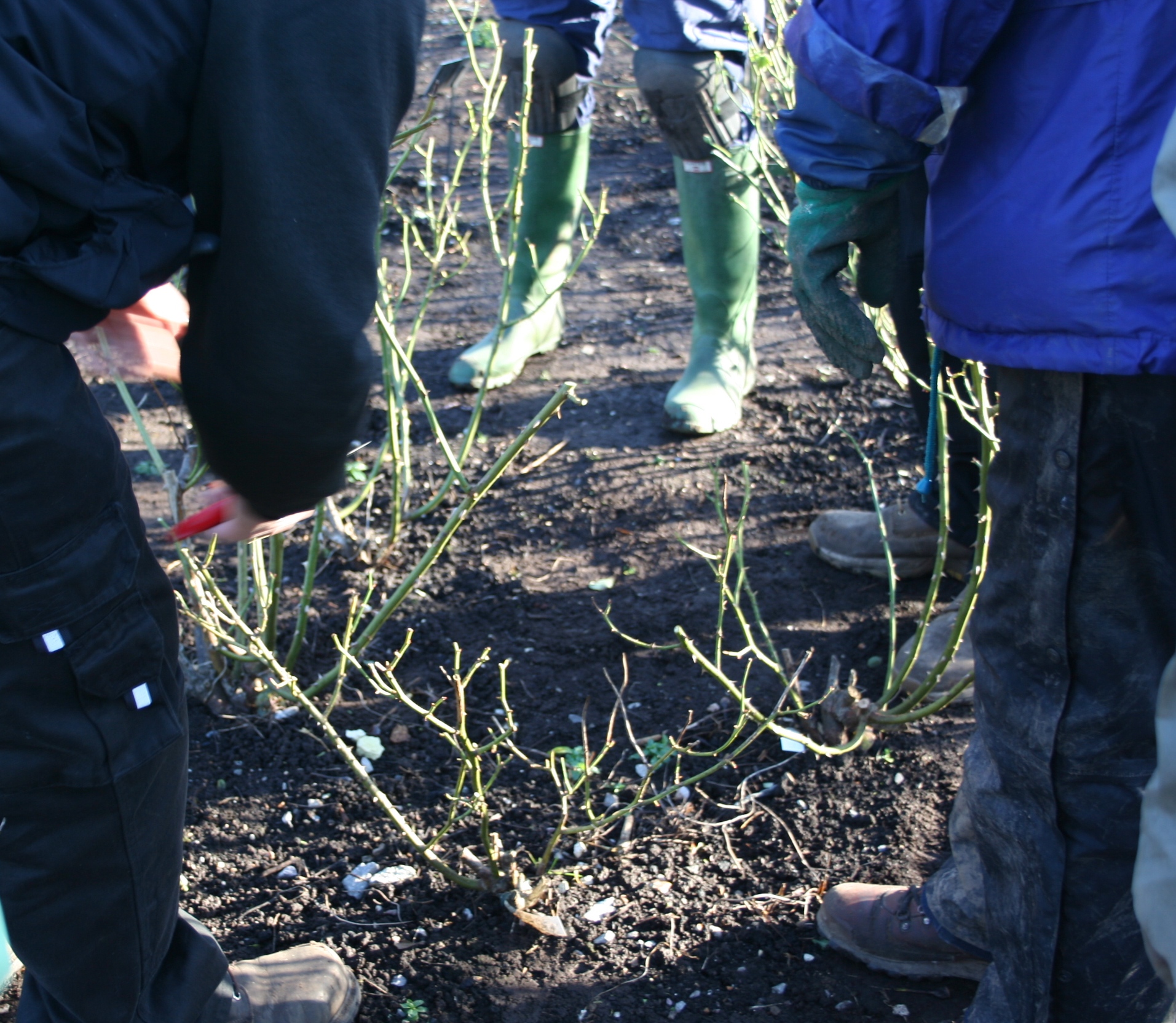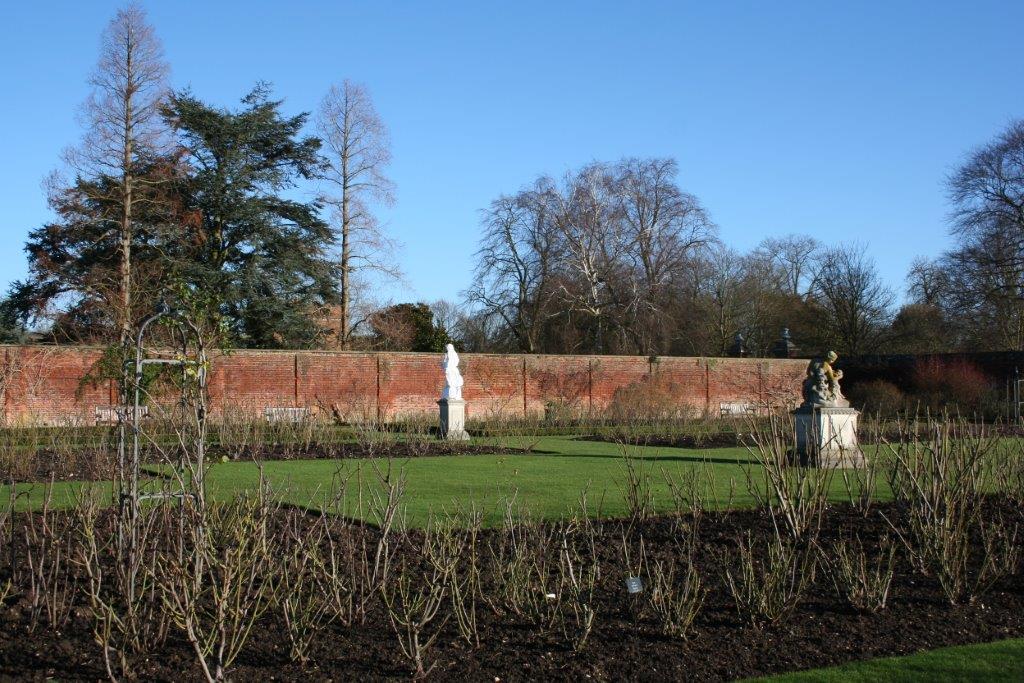A Report from member Izi Glover
Warden Abbey vineyard is a community enterprise entirely maintained by volunteers and managed by our workshop host, Jane Markham. The four acre ‘Lyttel Vineyard’ was originally planted in the twelfth century by Cistercian monks of Warden Abbey. The Whitbread family, local to the area, replanted the vineyard in 1986, and their award winning production was taken over by the current community project, who replanted some of the white grape vines. On average, four to six thousand bottles of award winning wine are produced annually. Their vintages include ‘The Reformer 2013,’ a blend of Bacchus and Reichensteiner grapes and ‘The Founder 2013,’ a blend of Muller Thurgau and Regner grapes.
In the morning, Jane shared her viticultural expertise and provided a detailed introduction to the annual cycle of vine cultivation and pruning. We gained fascinating insights into the complex world of wine production – from how the timing of pruning affects sugar levels in the grape (early pruning in January/February promotes higher sugar levels in the grape), to the crucial balance between leaf and grape (fourteen leaves above a bunch, one and a half leaves either side of the vine), and even why prunings are weighed in commercial vineyards (to monitor vine growth). We learned the scientific reasoning behind pruning methods, including nurturing a bud’s development and the best choice of healthy fruiting canes.
After lunch we drove out to the vineyard, which is off the beaten track. With the aid of an ingenious coloured clothes peg system, we put our winter vine pruning theory to practice, selecting canes with eight buds on the dormant vines that will fruit this year, and two renewal spur canes pruned to two buds that will produce canes for next year. The viticultural discussion continued in the field, with Jane providing excellent guidance and advice. ingenious coloured clothes peg system, we put our winter vine pruning theory to practice, selecting canes with eight buds on the dormant vines that will fruit this year, and two renewal spur canes pruned to two buds that will produce canes for next year. The viticultural discussion continued in the field, with Jane providing excellent guidance and advice.
I would highly recommend this workshop to fellow members next year – when I mentioned it to friends and garden owners, I had numerous requests for vine pruning. Moreover, beyond its practical merits, Jane’s shared knowledge of wine production was thought provoking in many ways. You come away with a terrific quiz question too!
 My Basket
My Basket


